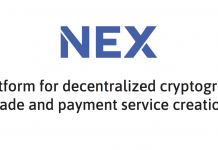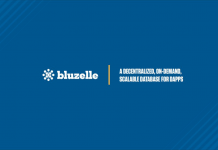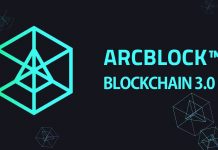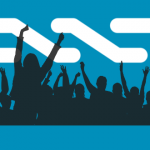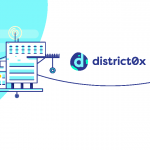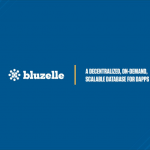PROJECT OVERVIEW.
Blockmason Credit Protocol is a simple mechanism for recording debts and credits on the blockchain. One entity sends a debt or credit request to another, and that user then confirms the debt or credit, which is recorded and stored within the Credit Protocol’s smart contract.
Any company can set up a log and record any debts or credits, even if they aren’t in fiat or cryptocurrency tokens. They can take other forms such as retail gift cards, loyalty reward programs like airline miles, or an internal payment system in a university or corporate campus.
What is necessary for these debts and credits to function is agreement between parties about for what the currency — be they miles, gift cards, or University of Kentucky Wildcat Dollars — can be redeemed. As long as the issuer of the currency accepts it for payment, the currency has value. Additionally, failing to accept the currency one issues has significant social and economic consequences, as the person/institution can lose their authority and trust.
BACKGROUND.
Most of today’s money is created by commercial banks when they issue loans. The total amount of money in the world is only a few trillion dollars, but the total amount of debt and other obligations is in the quadrillions. We cannot have a functioning society without a massive debt market. Yet the core service of banks is to basically keep a verifiable record of credit relationships.
As blockchain technology is particular good at accounting, it now provides an opportunity for communities and enterprises to exchange goods and services based on mutual-credit. The blockchain ledger can be referenced by both parties for confirmation of their agreement, allowing Jesse to loan Tim money without fear of deceit, as long as he believes Tim has sufficient incentive to repay him. If Tim never repays Jesse, Jesse knows never to lend Tim money — he has a constant reminder on the blockchain.
By storing permanent records of debt on the blockchain, the Credit Protocol offers a simple and secure way for users to develop lines of credit for any variety of financial interactions without banks, loan sharks, or exploitative institutions like those dealing in payday loans. For the first time, the creation of credit belongs to the people.
In fact, because an individual need not own ether in order to draw debt in ether, it is entirely possible to imagine a future in which debts and credits recorded on the Credit Protocol could exceed the total market capitalization of all cryptocurrencies combined, dramatically increasing the scale of the digital economy.
HOW IT WORKS.
The CP is made up of four parts, Credit Protocol Data smart contracts, Credit Protocol smart contracts, a Use Case Authority Contract (UCAC), and the Flux Capacitor Smart Contract.
The core of the system are Credit Protocol Data smart contracts, which have two main data structs containing all relevant information: Relationships and Debts. The former tracks the relationship between two entities, who must be “connected” in the system. Similar to a friend request, in order to receive a credit or debit request, you first must verify that you know the sender. The other struct, Debts, keep track of debts and credits between entities, what currency they are held in and hold pending debts. Think of it like a giant checkbook or accounting ledger which never can be changed or altered.
In addition, Credit Protocol smart contracts read and manipulate the Credit Protocol Data smart contracts, checking for “reading user’s debts, pending debts, sending debts, confirming debts, reading friends lists, adding friends, removing friends, etc.”
While it may seem like it only has simple applications, in fact there are a multitude of transaction types possible with the CP and each of these singular instances is paired with a Use Case Authority Contract (UCAC). The UCAC allows for certain rules to be set within the contract such as number of transactions per day, currency type, sender and receiver, etc.. and will allow for widespread use across many different business sectors. For example, an airline company could incorporate their air miles program into CP, distributing a credit (air miles) which then can be later used to purchase new tickets or for use in their company store.
Users interact with the Flux Capacitor smart contract, which “mimic the core CP contract functions, with the exception that each function also takes the address of a UCAC. The Flux Capacitor functions check the calls from the user against the UCAC at the UCAC address to make sure parameter values specified by the user are valid for that specific UCAC.” The Flux Capacitor smart contract also checks the staking by the user and for which contracts their stake has already been declared for. Thus, it acts as check for all other transactions to occur. “It administrates the parameters of a UCAC and limits transaction capacity according to the amount of CP Tokens a user has staked for a given UCAC.”
With CP acting as the protocol, any individual or enterprise will be able to build front end interfaces on top of their architecture. As the back-end processing of transactions would already be built and available for review on the blockchain, a company would simply have to hire a developer(s) to integrate CP into their existing systems, eliminating the need for costly back-end engineers.
As many different entities will eventually use CP in the future, Blockmason has created FoundationID, a mechanism to easily link different wallets to one ID. Any Ethereum address the user controls can be quickly linked to the FoundationID, via smart contract. Setting up a FoundationID will be necessary to use CP and will serve as their identity when using any DApp based on CP.
USE CASES.
BlockMason’s Credit Protocol has given institutions and individuals power that previously only existed in governments and central banks: the ability to issue credit and create currency. This opens up many exciting opportunities and applications such as:
- Social debt tracking among networks of friends (actually, this is the very first application on the CP: Friend in Debt, which is a simple and powerful application for creating and settling debts between friends. It enables long-term debt tracking, digital credit histories, personal loans, community crowdfunding, and much more).
- Gift cards issued by retailers.
- Closed economy currencies for campuses, companies, or attractions.
- Loyalty rewards programs for frequent customers.
- Crowdfunding medical expenses through microdebts.
- Infrastructure and construction loans for large project development.
- Personal digital banking in areas without access to traditional banks.
- Small consumer loans between trusted parties enforced through digital asset collateral or linked to blockchain reputation systems.
HOW ADVANCED IS THE PROJECT?
The protocol is working, and a fully-functional beta version of one of its products, Friend In Debt, is available for public testing at fiddy.io
CPT TOKEN USES.
As transaction using CP will be conducted on the Ethereum blockchain, but not always in ETH, Blockmason will issue Credit Protocol Tokens (CPT), which will be used to buy debt recording capacity from the network. A UCAC will have to be funded by a minimum staked amount of CPT for each transaction. If that airline company described above expected 100,000 transactions a month, they would have to hold and stake the number of CPT tokens supporting that transaction capacity.. CPT tokens only allow for a certain amount of transactions per day. If an entity needs to throughput more transactions, they would have to purchase more tokens. Greater adoption would fuel higher prices for tokens as more and more entities would need them for staking purposes.
The debt/credit issuer does not always have to be the one which stakes CPT though, any UCAC owner can “subliscense” their transactions and allow others to stake and receive a reward for it. The front end system, will have an algorithm designed to determine which stakes are chosen based on a variety of inputs such as reputation, staking time, amount stakes, fees, etc. Additionally, an enterprise could limit staking to just itself, creating a staking monopoly on the UCAC contract and allowing them to charge any price they wanted to transact.
SIMILAR PROJECTS.
Trustlines.
The Trustlines Network is a permissionless mobile payments platform “based on people powered money”. Here money may be denominated in real-world fiat currencies, while existing as IOUs between friends that have entered bilateral credit-line agreements. Payments between non-trusting strangers are implemented by rippling balance updates through a network of trustlines (i.e. a chain of friends-of-friends), until the payment reaches the receiver.
The ease of getting started makes mobile payments accessible to the unbanked, i.e. people without ID, cash or a bank account. All needed is a phone, internet and a friend.
Trustlines has many applications such as a P2P crypto exchange, whereby sellers and buyers can securely trade crypto currencies for fiat money or credit without having to know or meet each other. This feature removes the current centralized gateway barriers for acquiring and using cryptocurrencies
How is it different than other platforms in the space?
The CP is simply a backbone on top of which other DApps can be built to even incorporate more features, such as group settlements or automatic payment. Additionally, because the CP is open source and allows developers to integrate their own applications on top of the protocol, it is extremely likely that this will lead to the development of digital payment profiles and blockchain credit scores. Just as it’s tough to get an Uber ride when your rating is low, if you can’t be trusted for repayment, everyone utilizing the CP will know.



